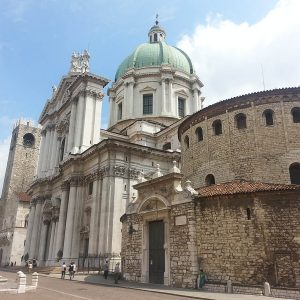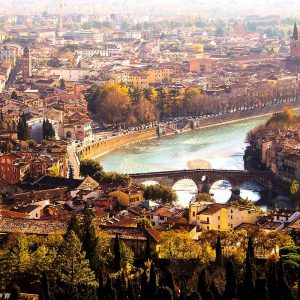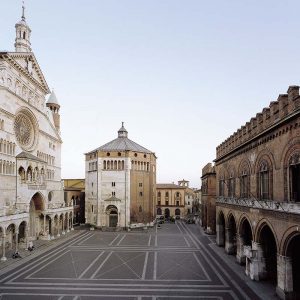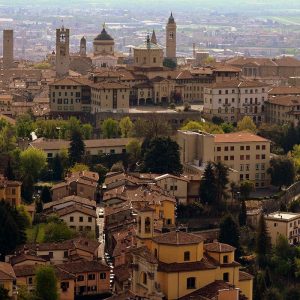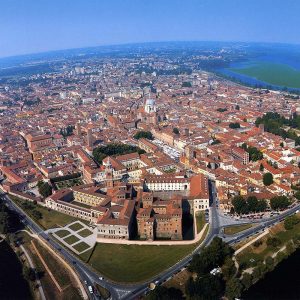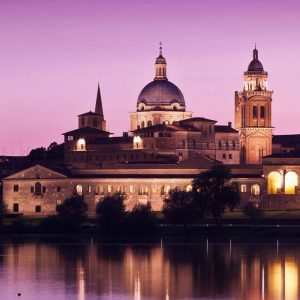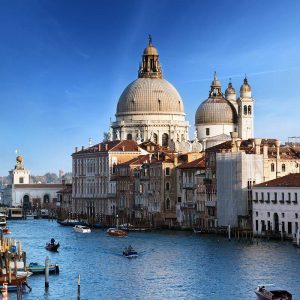Brescia
Distance 27 km
Brescia (Italian: [ˈbreʃʃa]) is a city of Lombardy in northern Italy. It is placed at the foot of the Alps, between Mella and Naviglio, with a population of ca. 197.000.
The monumental archaeological area of the Roman Forum and the monastery complex of San Salvatore-Santa Giulia have become a UNESCO World Heritage Site as part of a group of seven inscribed as Longobards in Italy. Places of the power (568-774 A.D.).
Monuments and places of interest:
Monumental Area of Foro romano
Longobard Monastic complex of San Salvatore – Santa Giulia
Weapons Museum at the Castle
Verona
Distance 54 km
Verona (Italian [veˈroːna]) is a city straddling the Adige river in Veneto, northern Italy, with ca. 265.000 inhabitants and one of the seven chef-lieus of the region. It is the second largest city municipality in the region and the third of northeast Italy.
The city has been awarded World Heritage Site status by UNESCO because of its urban structure and architecture.
Monuments and places of interest:
Arena di Verona e Castelvecchio
Roman Theatre
Square Erbe e Square Bra
Cremona
Distance 77 km
Cremona is a city and comune in northern Italy, situated in Lombardy, on the left bank of the Po River in the middle of the Pianura Padana (Po valley). It is the capital of Cremona province.
The city of Cremona is especially noted for its musical history and traditions, including some of the earliest and most renowned luthiers, such as Guarneri and Stradivari and several members of the Amati family.
Monuments and places of interest:
Museum of the Violin
The Cathedral and the Torrazzo
Museum of città sottosopra
Bergamo
Distance 82 km
Bergamo (Bergamasque: Bèrghem) is a city and commune in Lombardy, about 40 km northeast of Milan.
The town has two centres: “Città alta” (upper city), a hilltop medieval town, surrounded by 17th-century cyclopic defensive walls, and the “Città bassa” (lower city). The two parts of the town are connected by funicular/cable car, roads, and foot-paths (the most convenient being immediately adjacent to the funicular station). Parking spaces are very limited in the upper city.
Monuments and places of interest:
Santa Maria Maggiore e Cappella Colleoni
Palazzo della Ragione
Campanone
Mantova
Distance 84 km
Mantua (Italian: Mantova) is a city in Lombardy, Italy, and capital of the province of Mantova. In 2007 Mantua and Sabbioneta were been declared by UNESCO to be a World Heritage Site.
Mantua is surrounded on three sides by artificial lakes created during the 12th century. These receive the waters of the river Mincio, a tributary of the Po which descends from Lake Garda.
Monuments and places of interest:
San Pietro Cathedral
Basilica di Sant’Andrea
Palazzo Ducale
Palazzo Te
Mantegna’ House
Venezia
Distance 172 km
Venice (Italian: Venezia) is a city in northeastern Italy sited on a group of 118 small islands separated by canals and linked by bridges.
It is located in the marshy Venetian Lagoon which stretches along the shoreline, between the mouths of the Po and the Piave Rivers. Venice is renowned for the beauty of its setting, its architecture and its artworks. The city in its entirety is listed as a World Heritage Site, along with its lagoon.
Monuments and places of interest:
San Marco Square
Palazzo Ducale
Basilica di Santa Maria della Salute
Rialto Bridge
Murano and Burano
Brescia
Distance 27 km
Brescia (Italian: [ˈbreʃʃa]) is a city of Lombardy in northern Italy. It is placed at the foot of the Alps, between Mella and Naviglio, with a population of ca. 197.000.
The monumental archaeological area of the Roman Forum and the monastery complex of San Salvatore-Santa Giulia have become a UNESCO World Heritage Site as part of a group of seven inscribed as Longobards in Italy. Places of the power (568-774 A.D.).
Monuments and places of interest:
Monumental Area of Foro romano
Longobard Monastic complex of San Salvatore – Santa Giulia
Weapons Museum at the Castle
Verona
Distance 54 km
Verona (Italian [veˈroːna]) is a city straddling the Adige river in Veneto, northern Italy, with ca. 265.000 inhabitants and one of the seven chef-lieus of the region. It is the second largest city municipality in the region and the third of northeast Italy.
The city has been awarded World Heritage Site status by UNESCO because of its urban structure and architecture.
Monuments and places of interest:
Arena di Verona e Castelvecchio
Roman Theatre
Square Erbe e Square Bra
Cremona
Distance 77 km
Cremona is a city and comune in northern Italy, situated in Lombardy, on the left bank of the Po River in the middle of the Pianura Padana (Po valley). It is the capital of Cremona province.
The city of Cremona is especially noted for its musical history and traditions, including some of the earliest and most renowned luthiers, such as Guarneri and Stradivari and several members of the Amati family.
Monuments and places of interest:
Museum of the Violin
The Cathedral and the Torrazzo
Museum of città sottosopra
Bergamo
Distanza 82 km
Bergamo (Bèrghem in bergamasco) è un comune italiano di 115.454 abitanti, capoluogo di provincia lombardo.
La città di Bergamo è separata in due parti differenti, la Città Alta, con il centro storico cintato da mura che, come si può dedurre dal nome, è la parte più in alto della città, e la Città Bassa, la quale, nonostante sia anch’essa di antiche origini e conservi i suoi borghi storici, è stata resa più moderna da più recenti ristrutturazioni.
Monumenti e luoghi d’interesse:
Santa Maria Maggiore e Cappella Colleoni
Palazzo della Ragione
Campanone
Mantova
Distance 84 km
Mantua (Italian: Mantova) is a city in Lombardy, Italy, and capital of the province of Mantova. In 2007 Mantua and Sabbioneta were been declared by UNESCO to be a World Heritage Site.
Mantua is surrounded on three sides by artificial lakes created during the 12th century. These receive the waters of the river Mincio, a tributary of the Po which descends from Lake Garda.
Monuments and places of interest:
San Pietro Cathedral
Basilica di Sant’Andrea
Palazzo Ducale
Palazzo Te
Mantegna’ House
Venezia
Distance 172 km
Venice (Italian: Venezia) is a city in northeastern Italy sited on a group of 118 small islands separated by canals and linked by bridges.
It is located in the marshy Venetian Lagoon which stretches along the shoreline, between the mouths of the Po and the Piave Rivers. Venice is renowned for the beauty of its setting, its architecture and its artworks. The city in its entirety is listed as a World Heritage Site, along with its lagoon.
Monuments and places of interest:
San Marco Square
Palazzo Ducale
Basilica di Santa Maria della Salute
Rialto Bridge
Murano and Burano

